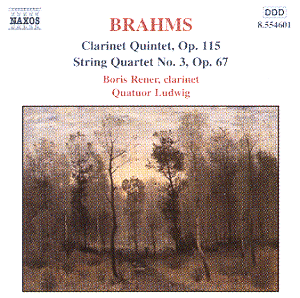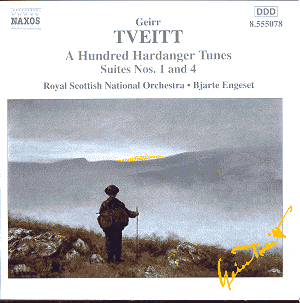 Composer: BRAHMS
Composer: BRAHMS
Works: Clarinet Quintet in B minor, Op. 115 (1891); String Quartet No. 3 in B-flat major, Op. 67 (1875)
Performers: Boris Rener (clarinet), Quatuor Ludwig
Recording: NAXOS 8.554601
Duration: 71:32
Recorded at: Alençon Auditorium, 13-15 February 1999
In the latest NAXOS release featuring Brahms’ Clarinet Quintet and String Quartet No. 3, we engage with two pivotal works that encapsulate the composer’s evolution from the passionate vigor of his middle years to the profound introspection characteristic of his late style. This recording, while not without its shortcomings, offers a compelling lens into Brahms’s intricate musical landscape.
Brahms composed the Clarinet Quintet in 1891, a work that emerges from the composer’s late style, suffused with a poignant melancholy and rich textural layers. Boris Rener’s clarinet demonstrates a beautifully mellow tone, ideally suited for Brahms’s lyrical writing. However, the recording’s stark clarity exposes a troubling imbalance between the clarinet and the strings of the Quatuor Ludwig. The strings, projected and bright, occasionally overshadow the clarinet’s more subdued voice. This interpretative choice, while perhaps intentional to convey the vitality of an aging composer, undermines the nuanced dialogue that Brahms crafted between the instruments.
In the opening movement, the clarinet’s lyrical themes are juxtaposed against the strings’ more assertive contributions. Yet, the first violin’s tendency to dominate the texture detracts from the delicate interplay that characterizes the piece. A more egalitarian approach would have better served the intricate counterpoint, particularly in the exposition, where Brahms introduces his thematic material with such subtlety. The slow movement, marked Adagio, should resonate with introspective warmth; instead, it occasionally flirts with the melodrama of a violin concerto. Here, the viola, which often bears the weight of Brahms’s harmonic exploration, seems underrepresented, particularly in measures 23-24 and 143-144 of the first movement, highlighting a performance that lacks the depth of engagement with the score’s emotional core.
The String Quartet No. 3, composed in 1875, displays Brahms’s mastery of the quartet medium. However, Quatuor Ludwig’s approach here feels somewhat mechanical, lacking the buoyancy and charm that the work’s Allegretto should convey. The finale, often interpreted with a spirited lightness, emerges instead as an Andante, revealing a tension between tempo and character that Brahms intricately balances. The ensemble’s adherence to mutes in the third movement is commendable, yet the tonal color it aims to evoke remains elusive, suggesting a missed opportunity for textural exploration.
Comparisons to other notable recordings, such as the iteration by the Emerson String Quartet and clarinetist Anthony McGill, emphasize the potential for a more transparent interplay between the clarinet and strings. The Emerson’s performance captures the quintet’s autumnal beauty while maintaining a conversational balance that feels organic, thus enriching the listening experience.
From an engineering perspective, this recording presents a bright and forward mix, perhaps too much so in favor of the strings. While clarity is essential, the balance between instruments should reflect the intimate nature of chamber music. In this instance, the recording’s focus on the strings compromises the overall sonority, particularly in climactic passages that should embrace a more unified sound.
In navigating the historical significance of these works, one must recognize Brahms’s position as a bridge between the Classical and Romantic idioms. The Clarinet Quintet, in particular, stands as a testament to his late-career introspection, a reflection on artistic maturity and the inexorable passage of time. The String Quartet No. 3, while rooted in Brahms’s earlier aesthetic, reveals his continual evolution as he navigated the complexities of four-part writing.
In conclusion, while this NAXOS recording of Brahms’s Clarinet Quintet and String Quartet No. 3 provides a fair representation of these masterpieces, it ultimately falls short of the interpretative depth that these works demand. The performers’ choices, while bold, often overshadow the intricate dialogues Brahms crafted within his scores. Thus, while this recording may serve as a curious exploration for the listener, it does not ascend to the heights of the composer’s rich legacy. For those seeking a more integrated and nuanced perspective on these works, it would be prudent to seek out alternate interpretations that better embrace the collaborative spirit inherent in Brahms’s chamber music.



